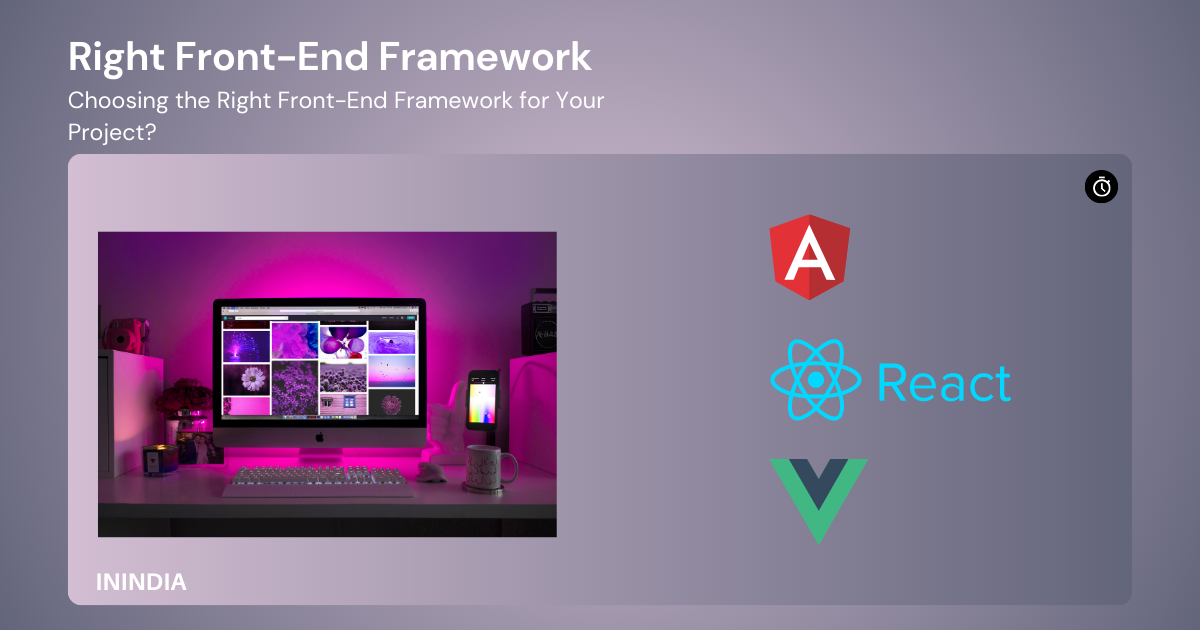
Choosing the Right Front-End Framework for Your Project: A Comprehensive Comparison and Pros/Cons Analysis
Introduction:
Front-end frameworks have transformed web development, empowering developers with efficient tools and resources. However, selecting the ideal front-end framework can be challenging due to the plethora of options available. In this comprehensive comparison, we will explore popular front-end frameworks, including Angular, React, Vue.js, and additional frameworks. By evaluating factors such as project requirements, performance, scalability, developer experience, and community support, you can make an informed decision. This article will also provide a detailed analysis of the pros and cons of each framework to guide your selection process.
To begin, let's establish a solid understanding of front-end frameworks and their role in web development. We will explore how these frameworks enhance productivity, promote code organisation, and ensure consistency across projects by utilising pre-built components, layout systems, and JavaScript libraries.
Angular, developed by Google, is a comprehensive front-end framework with powerful features such as declarative templates, two-way data binding, dependency injection, and routing capabilities. We will analyze the pros and cons of Angular, including its extensive ecosystem, robustness for complex projects, and steeper learning curve.
3. React: The Flexible Library:
React, maintained by Facebook, is a widely adopted JavaScript library known for its virtual DOM, component-based architecture, and unidirectional data flow. We will explore the pros and cons of React, highlighting its flexibility, reusability, extensive ecosystem, and the need for additional tooling for a complete development experience.
4. Vue.js: The Progressive Framework:
Vue.js is a progressive front-end framework renowned for its simplicity and versatility. We will delve into the pros and cons of Vue.js, including its gentle learning curve, efficient rendering, intuitive syntax, and ability to scale from small to large applications.
5. Additional Frameworks:
In addition to Angular, React, and Vue.js, we will introduce other notable front-end frameworks. These may include Ember.js, a framework focused on convention over configuration, and Svelte, a compiler-based framework known for its small bundle size and performance advantages. We will analyze the pros and cons of each framework to provide you with a comprehensive understanding of the available options.
6. Performance and Scalability Comparison:
领英推荐
Evaluating the performance and scalability of front-end frameworks is crucial. We will compare factors such as rendering speed, virtual DOM efficiency, bundle size, and caching mechanisms. Understanding the impact of these factors on page load times, user experience, and handling large datasets will aid in your decision-making process.
7. Developer Experience and Community Support:
Developer experience and community support play vital roles in framework selection. We will assess the developer experience offered by each framework, including development tools, debugging capabilities, and testing support. Additionally, we will explore the availability of learning resources, documentation quality, and the active engagement of each framework's community.
8. Project Requirements and Suitability:
Matching the framework to your project's unique requirements is essential. We will discuss scenarios where specific frameworks excel based on project complexity, team expertise, time constraints, and specific feature needs. Real-world examples and use cases will provide practical insights to guide your decision-making process.
9. Backend Technology Integration:
Considering backend technology integration is crucial for seamless collaboration. We will explore the compatibility and integration options of each framework with popular backend technologies like Node.js, Django, or Ruby on Rails. We'll evaluate considerations such as API interactions, data fetching, server-side rendering, and routing to ensure a cohesive ecosystem.
10. Visual Presentation and Conclusion:
To enhance the visual appeal of this article, we will incorporate visually appealing elements and graphics to engage readers and make the content more shareable. In conclusion, armed with a thorough understanding of the pros and cons of each framework, along with detailed comparisons, you will be empowered to choose the right front-end framework that best aligns with your project requirements and goals.
Conclusion:
Choosing the right front-end framework is a crucial decision that impacts the success of your web development projects. By evaluating the pros and cons of popular frameworks like Angular, React, Vue.js, and additional frameworks, you can make an informed decision tailored to your project's specific needs. Remember to consider factors such as project requirements, performance, scalability, developer experience, and community support. With this comprehensive comparison, you'll be well-equipped to embark on your web development journey with the perfect front-end framework.
At ININDIA , we are dedicated to providing top-notch IT services to meet the diverse needs of our clients. As a leading company in the industry, we offer a comprehensive range of solutions tailored to businesses of all sizes. Our team of highly skilled professionals combines expertise with innovation to deliver cutting-edge solutions in areas such as software development, web design and development, mobile app development, cloud computing, and IT consulting. With a client-centric approach, we strive to understand the unique requirements of each business and provide customized solutions that drive growth, efficiency, and success. Partner with ININDIA for reliable, scalable, and future-ready IT services that propel your business forward.